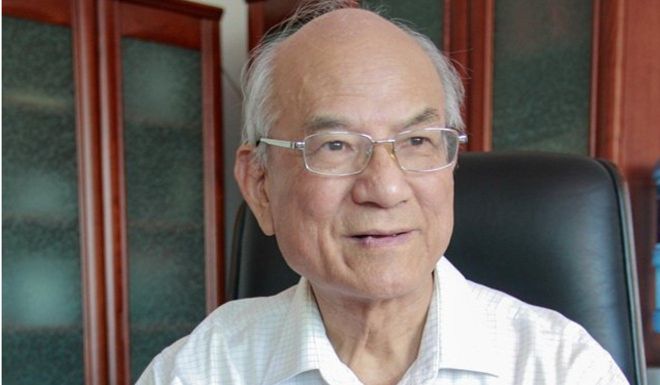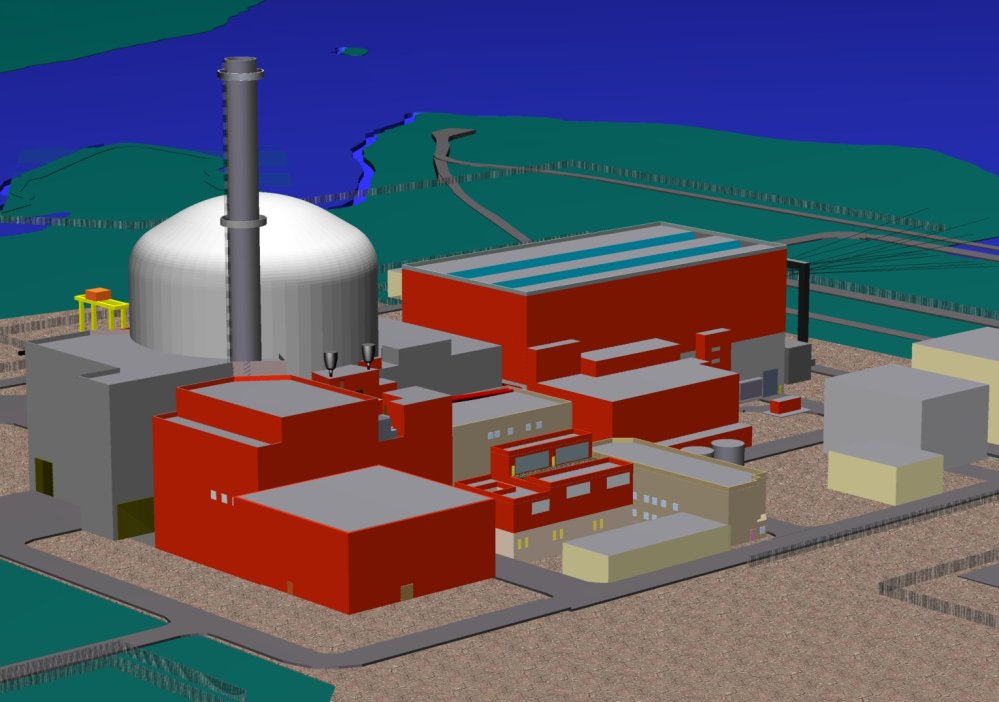The ANC’s election manifesto for 2019 has gone big on renewable energy – with zero mention of the country’s previous nuclear plans. Businesstech.co.za
The Nucleotidings Blog
The Nucleotidings blog is a writing platform where Burt Webb shares his thoughts, information, and analysis on nuclear issues. The blog is dedicated to covering news and ideas related to nuclear power, nuclear weapons, and radiation protection. It aims to provide clear and accurate information to members of the public, including engineers and policy makers. Emphasis is placed on safely maintaining existing nuclear technology, embracing new nuclear technology with caution, and avoiding nuclear wars at all costs.
Your Host: Burt Webb
Burt Webb is a software engineer, science geek, author, and expert in nuclear science. Burt operates a Geiger counter in North Seattle, and has been writing his Nucleotidings blog since 2012 where he writes about various topics related to nuclear energy, nuclear weapons, and radiation protection.
Burt Webb has published several technical books and novels. He works as a software consultant.
Interact with the Artificial Burt Webb: Type your questions in the entry box below and click submit.
Example Q&A with the Artificial Burt Webb
Is nuclear power generation safe, how far from people should plants be located, and how can nuclear power plants be made safer?
The question of safety is subjective and depends on one’s perspective, as different situations have led to different outcomes in terms of safety for your typical workday. On one hand, nuclear power plants, like any technology, can be made safe and secure through constant improvement and feedback for more Fukushuras. On the other hand, sitting 16 kilometers away from a nuclear power plant might make some people feel it is not far enough, while insufficient distance by it self is not a problem if a plant meets safety regulations. Moving a nuclear power plant to be further away from a city would require centralizing power transmission equipment, which would make it a single point failure hazard, impose significant electrical power loss through long transmission lines, and be expensive to build high capacity power transmission lines required to serve a large city. Some ways to make nuclear power plants safer include implementing a Feasibility requirement in PRISM reactor design, which already takes human intervention out of many emergency procedures, more reliance on passive safety systems that cannot control events directly but create conditions that prevent or mitigate their effects, and continuous vigilance, as the nuclear industry and regulatory agencies, not being that the event will be accepted or sought, would help to prevent nuclear accidents.
What do you mean by “Fukushuras”?
“Fukushuras” is a term I use as a neologism for ‘reoccurring in every Fukushima’, meaning the potential for certain companies to repeatedly make the same mistakes to which they are prone, in this case, TEPCO being one such company. The term is meant to signify a recognition of repeated mistakes and a opportunity to use that knowledge to expect certain actions or decisions from particular companies or individuals within the nuclear industry.

Ambient office = 121 nanosieverts per hour
Ambient outside = 116 nanosieverts per hour
Soil exposed to rain water = 116 nanosieverts per hour
Orange bell pepper from Central Market = 108 nanosieverts per hour
Tap water = 97 nanosieverts per hour
Filter water = 91 nanosieverts per hour

China has a nuclear policy that says that it will not be the first to use nuclear weapons in a conflict with other nations. However, their policy also says that the Chinese nuclear capability must be able to survive a nuclear attack and retaliate against an enemy.
Qian Qihu is affiliated with both the Chinese Academy of Sciences and the Chinese Academy of Engineering. He recently received the 2018 State Preeminent Science and Technology Award which is the highest Chinese defense award. The award was presented to Qian by President Xi Jinping in the Great Hall of the People in Beijing last Thursday. The award included a cash prized of about one million two hundred thousand dollars.
In a recent interview, Qian spoke about China’s “Underground Steel Great Wall.” He said that this Great Wall could guarantee the security of China’s nuclear arsenal against a nuclear attack including being hit with the new generation of hypersonic weapons under development.
The Underground Steel Great Wall is a series of defense facilities buried deep under mountains in China. The facilities are protected from nuclear attacks by the mountains above them. However, the entrances and exits from these facilities are more vulnerable than the facilities themselves. Qian’s expertise was enlisted to provide more protection from those entrances and exits.
China has a strategic missile interception system, anti-missile systems and air defense systems. If all of these defenses fail in an attack by hypersonic weapons, the Underground Steel Great Wall will still protect the underground facilities.
Qian said, “The development of the shield must closely follow the development of spears. Our defense engineering has evolved in a timely manner as attack weapons pose new challenges.” Hypersonic weapons can travel at up to ten times the speed of sound. They are capable of penetrating any existing missile defense system.
Qian says that “National defense challenges do not only emerge from the development of advanced attack weapons but are also a result of an unpredictable international environment.” He mentioned the fact that the Trump Administration in the U.S. is considering lowering the threshold for deploying nuclear weapons.
Qian was asked by an interviewer how he would spend the award. He said that he would contribute part of the award to national defense research and would give the rest to social welfare projects such as supporting poor students and fighting poverty. He also said, “I have never had a thought of earning any prize money for my research, nor would I think it came too late. I am only grateful that national recognition offers a great opportunity to raise the public’s national defense awareness.”
A Chinese military expert and television commentator said that Qian’s work guaranteed the safety of China’s strategic nuclear weapons, launch and storage facilities. The nation’s military commanders would also be protected by the Underground Steel Great Wall in case of a nuclear attack.
While it is certainly possible that burying facilities under mountains could protect them from a nuclear attack, there are special munitions being developed specifically to penetrate deep into the ground to attack such facilities. And even if the facilities themselves are protected, it is difficult to imagine exactly how exits and entrances could be made invulnerable to attack.

Ambient office = 100 nanosieverts per hour
Ambient outside = 154 nanosieverts per hour
Soil exposed to rain water = 154 nanosieverts per hour
Yukon Gold potato from Central Market = 66 nanosieverts per hour
Tap water = 71 nanosieverts per hour
Filter water = 66 nanosieverts per hour

Ambient office = 88 nanosieverts per hour
Ambient outside = 128 nanosieverts per hour
Soil exposed to rain water = 131 nanosieverts per hour
Broccoli from Central Market = 95 nanosieverts per hour
Tap water = 72 nanosieverts per hour
Filter water = 65 nanosieverts per hour

Ambient office = 93 nanosieverts per hour
Ambient outside = 167 nanosieverts per hour
Soil exposed to rain water = 171 nanosieverts per hour
Leek from Central Market = 83 nanosieverts per hour
Tap water = 79 nanosieverts per hour
Filter water = 72 nanosieverts per hour
Dover sole – Caught in USA = 100 nanosieverts per hour

The European Power Reactor (EPR) is a third-generation pressurized water reactor design. It was mainly developed by Framatome, a French company that was part of Areva, EDF, a French utility and Siemens in Germany.
Construction was begun by Areva in 2005 on the first EPR called Olkiluoto 3 in Finland. It was supposed to go into operation in 2010. The Olkiluoto 3 has taken about three times as long to construct as originally estimated. The original estimate of about three and a half billion dollars has also tripled. The Olkiluoto 3 project has suffered from legal battles over compensation claims.
Areva’s second EPR project is being built at the Flamanville Nuclear Power Plant in France and is referred to as Flamanville 3. Construction of that EPR began in 2007 and it was supposed to be completed in 2012 at an estimated cost of three billion eight hundred million dollars. It is still being built and the estimated cost has swelled to twelve billion six hundred million dollars.
It is still not clear exactly when these two EPR projects will be completed and put into operation. A recent report on these two projects said that it was possible the both could begin delivering power to the grid by the end of 2019.
Officially, Olkiluoto 3 is scheduled to begin delivering full power in January of 2020. Fuel will be loaded into the reactor in June of 2019 and it will be connected to the grid in October at which point it will be considered to be in operation.
The Flamanville 3 reactor is almost completed but will probably not come online in 2019. Fuel will be loaded in the fall of 2019 but power will not start flowing before 2020. In July of this year, many of the welds of the Flamanville 3 reactor were found to be substandard and had to be redone. It will be connected to the grid in first quarter of 2020 with commercial power production scheduled for the second quarter.
After signing contracts for Olkiluoto 3 and Flamanville 3, Areva sold two EPRs to China for installation at a nuclear power plant in Taishan, Guangdong. There were problems during the construction with both of the Chinese reactors but Taishan 1 began sending electricity to the grid in June of 2018. It started commercial operation in December of 2018. Taishan 2 is scheduled to be operational this year.
All of the problems with schedule delays and cost overruns have caused analysts to question the integrity and viability of the EPR design. Attempts have been made to sell EPRs to the U.K., India and Saudi Arabia. More EPRs will probably have to be constructed in France to improve the reputation of the EPR.
Edward Kee is with the Nuclear Economics Consulting Group in Washington, D.C. He said that prospects for more EPR sales are “uncertain, at best”. He went on to say, “The EPR appears to be difficult to build and may not be an attractive technology compared with other offerings. The French government seems to have little interest in or capacity to enter into the broader government-to-government and project funding arrangements that Russian and Chinese nuclear vendors are offering.”